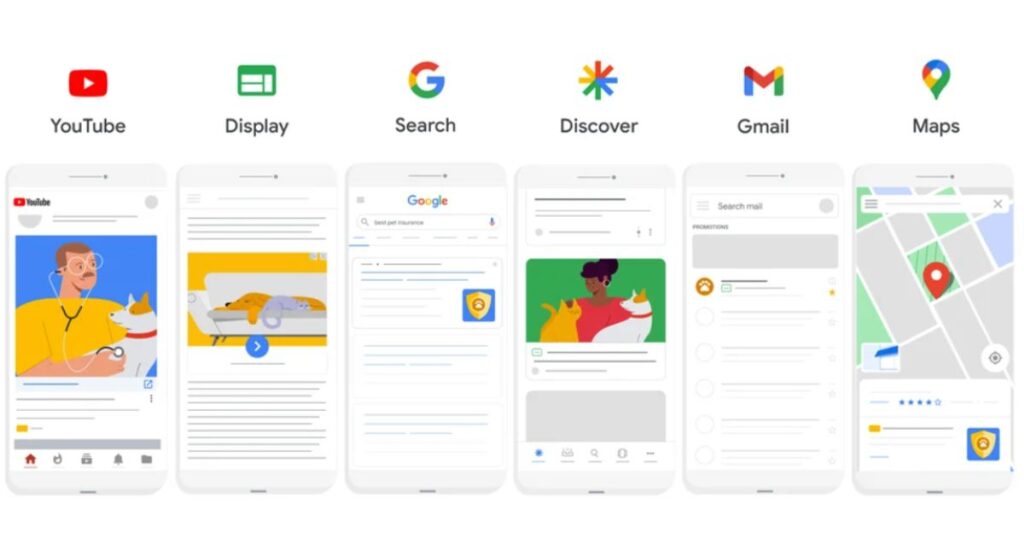Performance Max campaigns frustrate many Google Ads marketers for being a black box.
While they allow serving ads in multiple formats, they offer limited data insights and optimization possibilities.
In this article, I’ll suggest different ways to scale them.
2 Important Points Before We Start
Before we start, I’d like to mention 2 important points:
Data Is King
Performance Max campaigns rely heavily on Google’s AI bidding model. For this to generate good results, it needs a lot of data.
Before you make any changes, make sure that you have enough data. That is, enough data for the bidding algorithm, and for you to make data-based decisions.
If your bidding strategy is maximize conversion value with a target (tROAS), it’s recommended that your campaign has at least 50 conversions in the last 30 days, if not 100. If you use maximize conversions with a target, it’s best to have at least 30 conversions in the last 30 days, per campaign.
Also allow enough time and conversions data after the changes, to evaluate their impact.
The more data your PMax campaigns have, the better.
Testing Mentality
It’s important to approach this process as a testing plan. If you have several campaigns, you can assign certain changes to one at a time, and consider the others as the ‘control’.
When testing, I often start with the smaller campaigns, and if the results are satisfying, I roll out my changes to the next campaigns.
I’d also recommend planning and documenting the changes you make in a Google Sheet and writing down your hypothesis for each.
This can help you learn and improve your account’s performance over time.
1. Product Feed Optimization
By enriching your product titles with relevant terms, your performance max (and shopping) campaigns can show ads for more queries. You can add synonyms, attributes, and even USPs in some cases.
For example, let’s say you sell sugar-free candy for kids, and the original product title is ‘Chocolate Bar Teddybear’. An optimized title could be: ‘Sugar-Free Chocolate Bar Teddybear For Kids & Toddlers, Organic, Fair-Trade, 4 Oz.’
The potential reach of your SKU has just grown massively!
2. A/B Test Audience Signals
Audience signals in Performance Max campaigns are suggested by Google primarily to target users in the top and middle of the funnel.
You may target affinity, in-market, custom, and remarketing audiences. However, there are very few insights in the Google Ads UI as to how these audiences perform in terms of spend and conversions.
So one way to test this would be to create 2 asset groups with the same SKUs but with different audience signals. For example, one asset group with remarketing audiences, and another one without.
Then, you can allow these 2 asset groups to run for a week or two, and see whether one performs better than the other.
Another option is to test an asset group without any audience signals at all. From my experience, if you let this type of asset group run alongside an ad asset group with audiences, the latter will win most of the traffic.
So I would suggest testing this first in a smaller campaign: Create your no-audience asset group, pause the legacy one (with audiences), and let it run for one or two weeks. If it performs better, test against with the next campaign.

3. Raise Budgets
If your PMax campaign hits the target and spend the full daily budget, you can raise the budget. Do it gradually, no more than 20% raises at a time. This will prevent your campaign from re-entering the learning phase.
If your campaign is too far from its target ROAS or target CPA, increasing the budget will probably have little effect, if any.
4. Adapt Targets
If your campaign’s actual tROAS or tCPA is below the target, and overall account performance is acceptable, you could adapt your bidding target. Consider decreasing the target to be ca. 10% below actual performance.
E.g. if actual ROAS is 300%, decrease the target to 270%; if actual CPA is $50, increase your target to $55. If these targets are far from your current ones, consider adapting gradually.
5. Segmentation By SKUs
In most Google Ads accounts, only a few SKUs drive most spend and revenue. Leave these top performers in the original campaign, and build new campaigns for the rest of your SKUs.
You may segment those by category, performance, or margins. The more data you have, the more campaigns you can build.
6. Focus On Best-Sellers
Similar to the previous point, but without building new campaigns.
Assuming you have a few best-sellers outperforming the rest, let them run alone. After a while, the campaign’s performance should improve against the target, allowing higher spend.
Note that increasing spend might be slower with this approach.
7. Test A Feed-Only PMax Campaign
One of the main problems advertisers see with Performance Max, is that one can’t control how much is spent on the different ad formats. I’ve seen campaigns where 30% of the budget is spent on video ads, which perform far worse than shopping ads.
One way to control this would be to create feed-only performance max campaigns. This means, without image and video assets.
The only way this works at the moment is by creating the new campaign in Google Merchant Centre, and then editing the targeting, bids, and asset group (SKUs) in Google Ads.
This is the closest thing to a standard shopping campaign.
I offer this option in the context of scaling, as this can result in better ROAS/CPA, and thus allow the algorithm to spend more.

8. Optimize Assets
I left this one to the end, as from my experience it’s hard to measure its impact on performance.
Essentially, you can review your assets performance report, and replace all assets that rank ‘poor’ with new ones.
If you have new images, videos, or titles that you believe can have more potential, you can also add them to the asset group.
One way to test this would be to duplicate the original asset group and tweak the new one. Another way would be to make changes without creating a new asset group and check performance after 2 weeks.
Deeper Performance Max Insights With Scripts
Advertisers often complain about the limited insights performance max campaigns offer.
How is the budget split across audiences and ad formats? How do different search terms perform?
I use Mike Rhodes’ scripts to gain deeper insights into PMax performance. I use his PMax Insights script to view the ad format split of each campaign.
I use his PMax Search Terms & Categories script to analyze search terms performance. This one is great for discovering new keywords you can insert in your product titles or bid on in search campaigns.
Conclusion
While Google’s Performance Max campaigns offer limited insights and rely heavily on AI and automation, there are ways to scale them. Product feed optimization and adapting bids are just a few.
Make sure the campaigns collect enough data before making changes or drawing conclusions, and employ a testing mentality.
Further Reading:
- Performance Max Best Practices
- 13 Ways To Optimize Google Shopping Ads (In A Profitable Way)
- Examples of Using ChatGPT for Google Ads
- Demand Gen: Google Ads Version of Paid Social Campaigns?
- Google Ads Bidding Strategies: The Ultimate Guide (And Which One To Use)
- How To Increase Conversion Rate On Shopify

